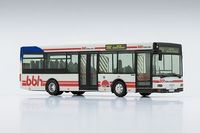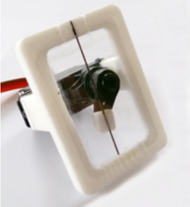Bus-Station
General
Based on the term station, which is used for this railway, bus stops with several bus stops are called bus stations.
As a rule, the bus has only doors for the passengers on one side. Therefore, more bus platforms are needed.
There are different versions:
- Several bus platforms are approached directly from the main road
- After a driveway is distributed on the bus platforms
- Platforms can hold one or more buses
- For one bus we only set up a track
- For several buses we set up an alternative lane (fast lane).
- For one bus we only set up a track
- access
- It is turned 90 degrees into the stop
- at 45 degrees one speaks of a bus curve
- It is turned 90 degrees into the stop
= Types of buses =
- Low-floor buses hardly need elevated curbs
- Lowerable buses can be used at different heights.
- Buses with differently extendable entry levels also use high entry possibilities.
Sometimes the platforms of the tram are shared.
Distribution of buses
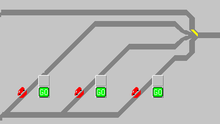
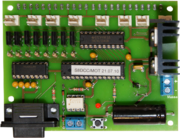
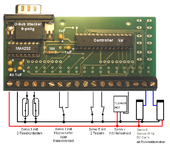
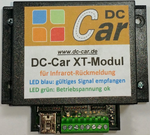
For the distribution of the vehicle, a servo can switch up to 4 ways.
Corresponding servo turn outs are available for 3 or 4 ways, for wire or magnetic wire.
The required Servodecoder W4 offers operation via digital central unit or PC ( Windigipet even without control panel)
With an Inputprint and Feedback sensor the buses can distribute themselves in order.
But if a particular bus should always arrive at its stop, the XT module is better.
It sets the servo according to the request from the bus (XT module # evaluation of vehicle number, vehicle number 1-31) in a maximum of 4 positions.
